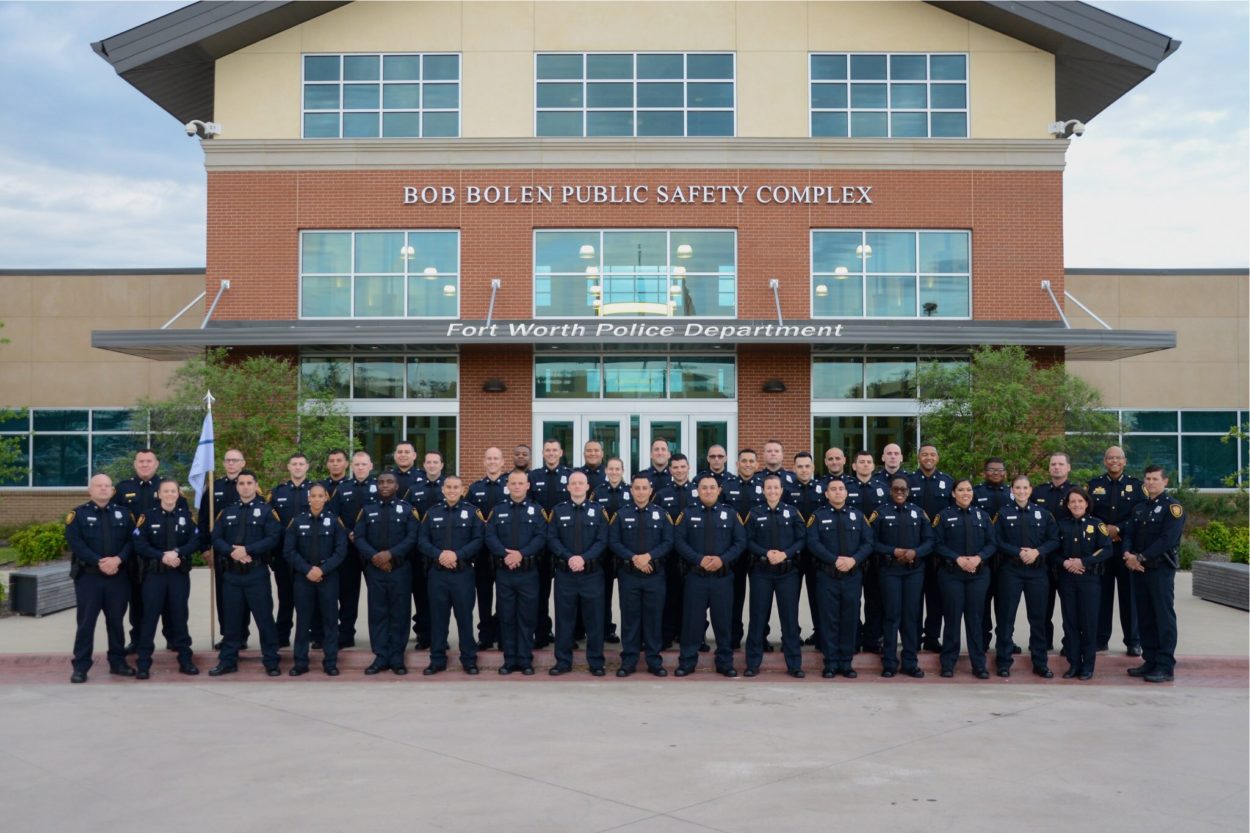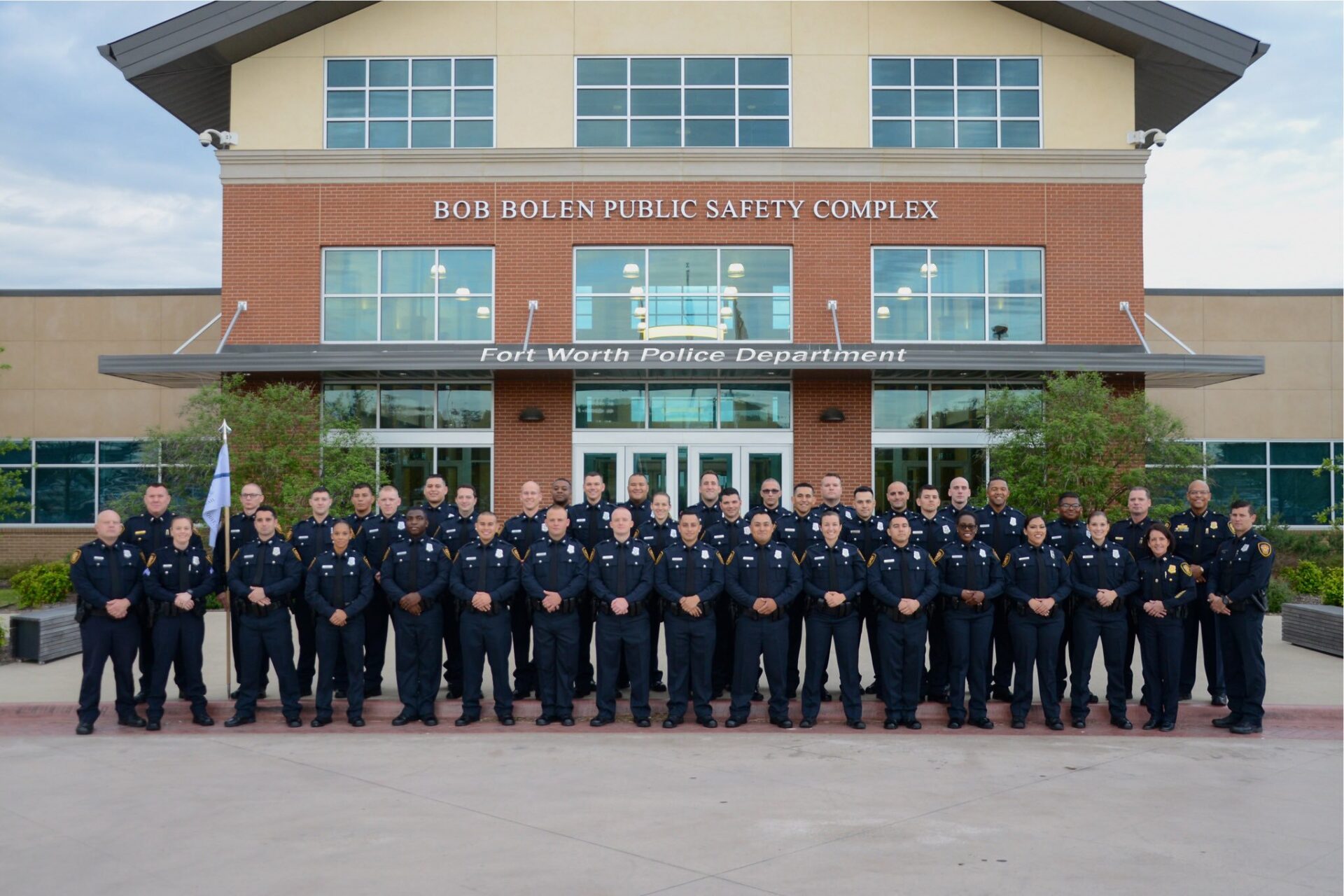
The Fort Worth Police Department places a big emphasis on judgmental use of force training using the VirTra V-300 firearms training simulator that is located inside their 30,000-square foot advanced training facility. Equipped with more than 130 unique judgmental use of force scenarios, the VirTra V-300 allows police officers and recruits to train in life-or-death, shoot/no-shoot situations they may face in the field. Officer David Garcia heads the training program, and has been a law enforcement trainer and instructor for more than 25 years. He’s seen first-hand how technology has changed use of force training and thinks the VirTra V-300 firearms training simulator is an important part of a trainer’s toolkit.

Realistic, Effective Training for New Recruits
The 300-degree view that the VirTra V-300 provides trainees is an important part of making the judgmental use of force scenarios real in a way that previous virtual reality firearms training simulators could not. “One of the goals of training is to get as close to real as possible while maintaining the safety of our officers and the public, said Garcia.
“And our previous simulator wasn’t very realistic.”
His department wanted to make sure that their judgmental use of force training “does a better job reinforcing the soft skills officers and new recruits need so they’re able to come into a situation without getting hurt or hurting someone else.”
Good verbal skills are an important part of police training, and the ability for new recruits to go through potentially dangerous scenarios in a controlled, yet realistic environment.
The VirTra V-300 simulator that Fort Worth PD installed has virtually every possible use of force scenario that an officer could encounter in the field, from active shooting incidents, to vicious dogs to traffic stops. Garcia felt that the traffic stop situation in which a subject is resistant to an officer’s commands is particularly instructive for new recruits, who may be unsure of themselves, or the local statutes which allow them to take certain actions, such as requiring a subject to identify themselves. Law enforcement officers need to learn effective techniques for communicating under stress, by de-escalating a situation or to avoid being drawn into a physical confrontation.
The Results: Improved Efficiencies, Better Tactics
By using the VirTra V-300 simulator, The Fort Worth training team found significant increased efficiencies in their training scheduling. Training supervisors are now working with field supervisors to schedule use of force training on the Virtra V-300 simulator in 30-minute blocks, allowing one or two recruits to run through a scenario and receive detailed feedback on the actions they took and judgments made during the process. And “replaying the scenario allows recruits to see their mistakes,” says Garcia.
Often trainees will hesitate and react with uncertainty during a scenario or not remember what action they took, and law enforcement recruits are often surprised or unaware of what happened. Trainers can review the actions taken during the debrief process, and recruits can see how the simulated stress of the incredibly realistic judgmental use of force scenarios found in the VirTra V-300 simulator can impact their decision-making. “They will claim that they did something the way they were taught until they are shown a video replay, and we’ve got it there on tape,” said Garcia. He cited an example of a recruit who fell back on engaging a subject with a weapon in his strong hand versus a two-hand hold, and how the video element of the debrief allowed him to demonstrate to the recruit immediately the proper shooting stance and how it impacted both his safety and marksmanship. And Garcia says “the biggest payoff is in the debriefing. When they see it, they say ‘wow’”.
Garcia also appreciates that he can teach new law enforcement recruits physical skills in addition to the psychological aspect of good communication. “I can see if their hands are empty and ready as they begin engaging a subject, or if they’re in a proper shooting stance if the scenario escalates,” ensuring that recruits are correctly using the techniques they’ve been taught which will help keep themselves and the public safer. These are insights that can’t be gleaned from training on a shooting range or using older technology, since the action is usually more static and less realistic.
The realistic use of force scenarios also allow recruits to better understand the physiological effects of stress that can accompany the immersive sights and sounds sound in the VirTra V-300 firearms simulator. These lifelike aspects sometimes have an impact on the way law enforcement officers and recruits interpret things and react in the scenarios, causing them to miss the sound of a door opening outside their field of view. In a scenario in which the subject has a firearm, this can have potentially deadly consequences. “[VirTra System is] as realistic as you can get,” says Garcia.







